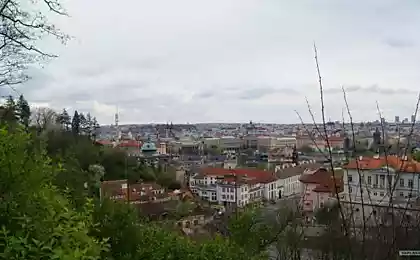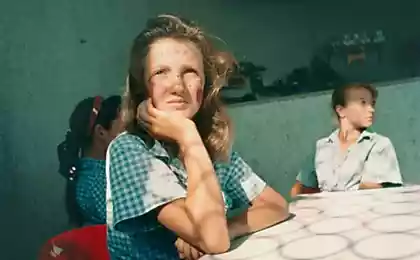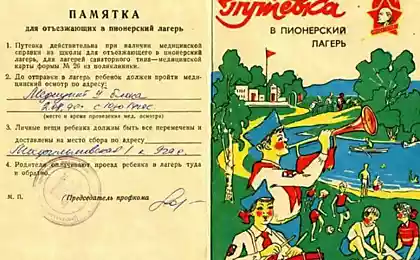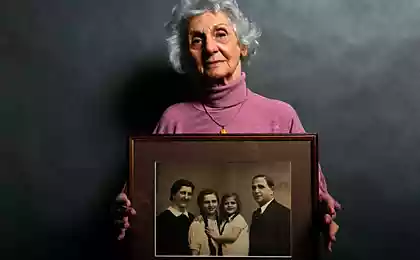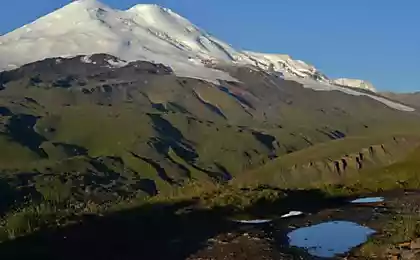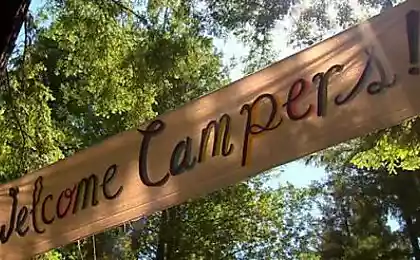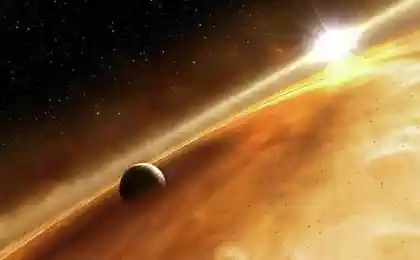515
Terezín - a concentration camp in the Czech Republic
I came to Prague for the sixth time. Of course, during this time, visited almost a dozen museums, prayed in almost every Church of the city, were touched by the swans floating on the waters of the Vltava river, and peacocks strode through the Wallenstein gardens, saw sun, snow, rain, yellow, and green slopes of petřín, and nearly naked too, under the November sky, and then under the February... But there was one more place I had to reach. Had postponed our meeting, knowing that it was inevitable.
Seventy one million thirty nine thousand one hundred sixty five
The town of Terezin was originally a fortress, erected by order of Emperor Josef II in the 18th century and named after his mother Empress Maria Theresa. Almost from the beginning of its existence the fortress served as a prison for prisoners of war and political prisoners, and in 1941 turned into a concentration camp.
...Ragged walls contrasted oddly with the bright blue sky, hot Sunny day and breaking through brickwork grass, which seemed to say: "Yes is there something stronger than Life?". Eat. And at the same time — no.
"We need to bring in the winter", I thought. But here, naked and so hungry earth under my feet, and the top roll in biting the snow to dry the seeds from a distant birch trees growing behind the thick walls. If Nature wants to share the freedom that this two, but Man its constantly misses, loses, or just does not care…
In fact, it was the Jewish ghetto and the Assembly point for further shipment. The Nazis presented this place as a "model camp", "the Imperial nursing home" — here got including German and Austrian Jews who had merit to Germany. Wikipedia says: "Theresienstadt had very high educational and professional level of prisoners, among whom were many scientists, writers, musicians, politicians and international fame." Through it passed more than 140 000 Jewish men, women and children from the occupied territories. Part of the fortress served as a Gestapo prison, and very soon the Gestapo's principles have spread to all residents. The prisoners were cut off from the outside world, lived in appalling sanitary and living conditions, under constant threat of destruction. We were shown to a small cubicle with a blank wall and gate and there was a stand like in the showers. "They have never been used, explained a local guide. — This wall shot of the guilty. And the gate is not specifically closed to the massacre could see all the other prisoners."
...We lingered in the courtyard — free people from different European countries — in the middle of the barracks, which was scary even to go, not to touch the walls, imagine himself sleeping on the rotten wooden shelves. Seventy years ago, this courtyard was filled with those who, like us, had the right to life, love, creativity, happiness. And was deprived of this right. "Stand in the shadow", — said the girl-guide. It was the month on the 6th pregnancy, and its delicate position was belied by the expression work in 30-degree heat, this place, with this theme. My mouth was bitter, his throat sore, as if squeezed a thick rope, as always happens on the verge of tears. And this girl, placing us under a canopy, stood on the sunlight, his arms around his stomach and glistening with damp eyes, told further…
Bitter historical fact: along with the actual events Terezin in 1944. and in the beginning of 1945. demonstrated delegation of the red cross, calling it "the town that Hitler gave to the Jews." After the visit of the Commission, who saw in the children's garden, school, hospital, cafe, swimming pool, contained herein people continued to torture, kill, and deport to the death camps... Prisoners chose their own form of silent resistance to the extent possible and given them freedoms (if you can call it that) they taught the children (in local Ghetto Museum displays lots of children's drawings), organized a small music concerts and theatrical productions, came up with a ploy to facilitate domestic provisions and carry out their spiritual life.
After a tour of the fortress, our main guide, a man of 38 with bright blue eyes and perfect English ("Czech? Slovak? Pole?"— was trying to guess while I was driving from Prague), took us to a tiny cinema. On the screen — a documentary film: black-and-white photographs of inmates, soft music, hard numbers. At terezín, the people "assembled" in the compositions 1-2 thousands (many died directly at the Assembly point from the hard work and the intolerable conditions of detention) and pursued further — in Auschwitz, Auschwitz, other camps. At the time of liberation in 1945 of each such party on 1-2 thousand of prisoners sent from Teresina, remained alive a few. It seems that 20 is the maximum number that I heard only once. Often sounded the heavy bell: "No survivors»…
...The bus stopped about one-storey building of grey. Before him stretched a field of tombstones with small tiles. "Where are the names? And what are these numbers?"— surprised by a pair of American girls. I heard a pause, which the guide stood with effort. "This is the crematorium. When Terezin was liberated, with only some room from executed prisoners and ashes. No name. And of course, no analysis of where his remains".
We went inside: a display of photographs and documents, a few furnaces and on top of them — candles, lit in memory of the victims.
I went out into the yard. Our guide was standing a little to the side.
— I wanted to ask: why on the roof of the crematorium there is a sculpture of an owl?
— Night bird. Protects those who have left this world.
— Okay, thank you.
— Where Are You From?
— from Moscow.
— And I'm from Ukraine, and he switched to Russian, and from a young man into a weary man in middle age. — I don't like to go here, it's so hard... But today I had to replace a colleague. I know people come: Americans, Germans, Austrians, and young too. But I think they don't understand and never will understand... And You? Are You so interested?
"Yes," I answered quietly and did not consider it possible to explain something over. Because no logical "beyond" I do not have. Just in the two weeks in Europe, visiting nearly a dozen churches, I lit a candle here in the Terezin crematorium…
The need to write something I already know unerringly on arising of physical sensations. And you never know what will be the trigger that defines the subject of the text and the moment when, finally, hopelessly and sigh of relief, sitting down at the computer. And then day by day was before my eyes slide: gnawed the brick walls, trampled the ground, barbed snowfall birch seeds…
And I felt: I guess I can write about it and simultaneously can't write about anything else until I tell you that there is a place on Earth — Terezin. There is a creature on Earth — Man. Is feeling, without which he is not entitled him to be called, without which it cannot be itself real, it is a feeling of Compassion.
Yes ...unless there is something stronger than Life? Eat. And at the same time — no. published
P. S. And remember, just changing your mind — together we change the world! ©
Source: /users/9001
Seventy one million thirty nine thousand one hundred sixty five
The town of Terezin was originally a fortress, erected by order of Emperor Josef II in the 18th century and named after his mother Empress Maria Theresa. Almost from the beginning of its existence the fortress served as a prison for prisoners of war and political prisoners, and in 1941 turned into a concentration camp.
...Ragged walls contrasted oddly with the bright blue sky, hot Sunny day and breaking through brickwork grass, which seemed to say: "Yes is there something stronger than Life?". Eat. And at the same time — no.
"We need to bring in the winter", I thought. But here, naked and so hungry earth under my feet, and the top roll in biting the snow to dry the seeds from a distant birch trees growing behind the thick walls. If Nature wants to share the freedom that this two, but Man its constantly misses, loses, or just does not care…
In fact, it was the Jewish ghetto and the Assembly point for further shipment. The Nazis presented this place as a "model camp", "the Imperial nursing home" — here got including German and Austrian Jews who had merit to Germany. Wikipedia says: "Theresienstadt had very high educational and professional level of prisoners, among whom were many scientists, writers, musicians, politicians and international fame." Through it passed more than 140 000 Jewish men, women and children from the occupied territories. Part of the fortress served as a Gestapo prison, and very soon the Gestapo's principles have spread to all residents. The prisoners were cut off from the outside world, lived in appalling sanitary and living conditions, under constant threat of destruction. We were shown to a small cubicle with a blank wall and gate and there was a stand like in the showers. "They have never been used, explained a local guide. — This wall shot of the guilty. And the gate is not specifically closed to the massacre could see all the other prisoners."
...We lingered in the courtyard — free people from different European countries — in the middle of the barracks, which was scary even to go, not to touch the walls, imagine himself sleeping on the rotten wooden shelves. Seventy years ago, this courtyard was filled with those who, like us, had the right to life, love, creativity, happiness. And was deprived of this right. "Stand in the shadow", — said the girl-guide. It was the month on the 6th pregnancy, and its delicate position was belied by the expression work in 30-degree heat, this place, with this theme. My mouth was bitter, his throat sore, as if squeezed a thick rope, as always happens on the verge of tears. And this girl, placing us under a canopy, stood on the sunlight, his arms around his stomach and glistening with damp eyes, told further…
Bitter historical fact: along with the actual events Terezin in 1944. and in the beginning of 1945. demonstrated delegation of the red cross, calling it "the town that Hitler gave to the Jews." After the visit of the Commission, who saw in the children's garden, school, hospital, cafe, swimming pool, contained herein people continued to torture, kill, and deport to the death camps... Prisoners chose their own form of silent resistance to the extent possible and given them freedoms (if you can call it that) they taught the children (in local Ghetto Museum displays lots of children's drawings), organized a small music concerts and theatrical productions, came up with a ploy to facilitate domestic provisions and carry out their spiritual life.
After a tour of the fortress, our main guide, a man of 38 with bright blue eyes and perfect English ("Czech? Slovak? Pole?"— was trying to guess while I was driving from Prague), took us to a tiny cinema. On the screen — a documentary film: black-and-white photographs of inmates, soft music, hard numbers. At terezín, the people "assembled" in the compositions 1-2 thousands (many died directly at the Assembly point from the hard work and the intolerable conditions of detention) and pursued further — in Auschwitz, Auschwitz, other camps. At the time of liberation in 1945 of each such party on 1-2 thousand of prisoners sent from Teresina, remained alive a few. It seems that 20 is the maximum number that I heard only once. Often sounded the heavy bell: "No survivors»…
...The bus stopped about one-storey building of grey. Before him stretched a field of tombstones with small tiles. "Where are the names? And what are these numbers?"— surprised by a pair of American girls. I heard a pause, which the guide stood with effort. "This is the crematorium. When Terezin was liberated, with only some room from executed prisoners and ashes. No name. And of course, no analysis of where his remains".
We went inside: a display of photographs and documents, a few furnaces and on top of them — candles, lit in memory of the victims.
I went out into the yard. Our guide was standing a little to the side.
— I wanted to ask: why on the roof of the crematorium there is a sculpture of an owl?
— Night bird. Protects those who have left this world.
— Okay, thank you.
— Where Are You From?
— from Moscow.
— And I'm from Ukraine, and he switched to Russian, and from a young man into a weary man in middle age. — I don't like to go here, it's so hard... But today I had to replace a colleague. I know people come: Americans, Germans, Austrians, and young too. But I think they don't understand and never will understand... And You? Are You so interested?
"Yes," I answered quietly and did not consider it possible to explain something over. Because no logical "beyond" I do not have. Just in the two weeks in Europe, visiting nearly a dozen churches, I lit a candle here in the Terezin crematorium…
The need to write something I already know unerringly on arising of physical sensations. And you never know what will be the trigger that defines the subject of the text and the moment when, finally, hopelessly and sigh of relief, sitting down at the computer. And then day by day was before my eyes slide: gnawed the brick walls, trampled the ground, barbed snowfall birch seeds…
And I felt: I guess I can write about it and simultaneously can't write about anything else until I tell you that there is a place on Earth — Terezin. There is a creature on Earth — Man. Is feeling, without which he is not entitled him to be called, without which it cannot be itself real, it is a feeling of Compassion.
Yes ...unless there is something stronger than Life? Eat. And at the same time — no. published
P. S. And remember, just changing your mind — together we change the world! ©
Source: /users/9001



